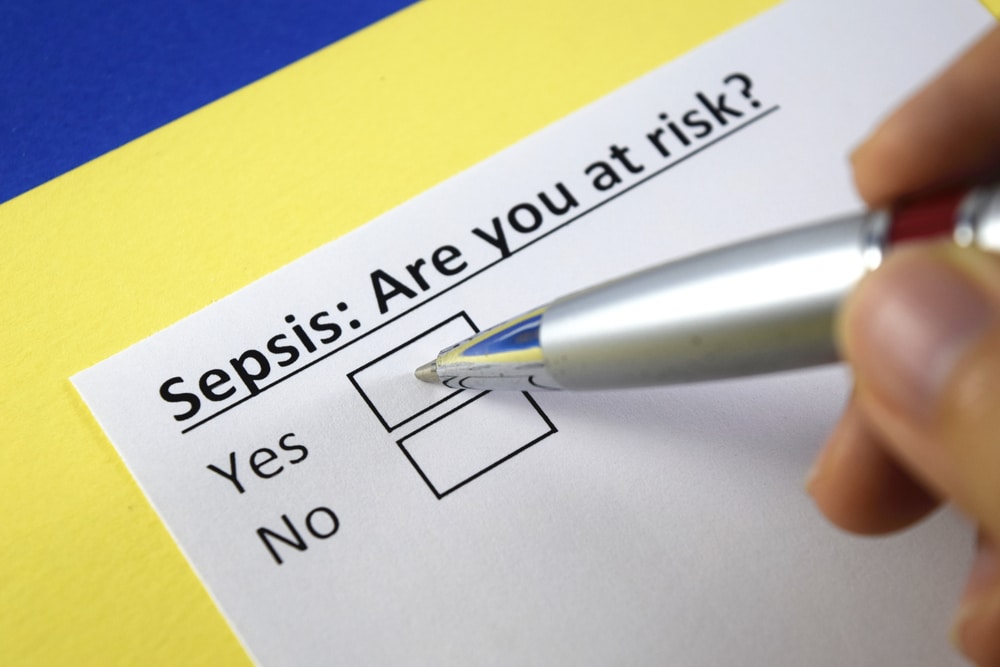How Common is Sepsis in Nursing Homes?

Sepsis is a medical condition that affects millions of people each year. Sadly, sepsis in nursing homes seems to be an ever-present problem plaguing elderly Americans.
Sepsis is the body’s response to an infection. When the body responds to an infection, generally, it fights it off. However, if the body has an overwhelming response to the infection, the body can actually become toxic and overactive.
When sepsis develops, the body’s response works against itself. The result is organ and tissue damage, organ failure, and in many cases, death.
How Common is Sepsis in Nursing Homes?
Healthcare environments should be clean and healthy. Staff and caregivers should have training on how to keep patients safe and healthy. Unfortunately, it seems that many nursing homes in the United States are not taking adequate measures to ensure that patients are properly cared for. Data related to the number of sepsis cases in nursing homes is alarming. Consider the following:
- Sepsis is the most common reason that nursing home residents are transferred to a hospital.
- There are an estimated 1.5 million hospitalizations each year due to sepsis.
- Overall, sepsis is linked to over 250,000 deaths each year.
- Each year, 25,000 nursing home residents die due to sepsis.
- As many as 30% of patients who develop sepsis do not survive.
- Around 50% of those who survive sepsis develop “post-sepsis syndrome”.
- Sepsis costs Medicare around $2 billion each year.
- Hospitalizations due to sepsis cost around $27 billion each year.
What makes this data even more alarming is the fact that most of these instances of sepsis could be prevented. Nursing home patients who are cared for within the standards of care should never develop serious infections, bedsores, or sepsis.
Why are Nursing Home Residents So Vulnerable?
One would think that nursing homes and healthcare environments would have infection control measures in place to prevent sepsis. In most cases that is true, however, not all facilities follow state and federal guidelines. In fact, the Centers for Medicare and Medicaid Services (CMS) has reported that up to 72% of nursing homes in the U.S. have received citations for not following infection control guidelines.
Unfortunately, nursing home patients are more vulnerable to sepsis because of:
- Age
- Immobility
- Weakened immune system
Elderly nursing home patients are also at an increased risk of sepsis because they are more likely to develop certain infections. Common infections that elderly patients suffer include urinary tract infections (UTI) and pneumonia. These are two of the more common infections that lead to sepsis in nursing homes.
What Can be Done About Sepsis in Nursing Homes?
Sepsis is the body’s response to an infection, so naturally infection control is the first line of defense against sepsis. Researchers tend to disagree about how preventable sepsis is, but the general consensus is that infection control guidelines are the key to reducing cases of sepsis.
Further, preventing sepsis-related deaths requires better recognition, diagnosis, and timely treatment. Any nursing home resident who is vulnerable to infection should be closely monitored for signs of sepsis.
The Sepsis Alliance recommends caregivers and family members use the organization’s “It’s About TIME” acronym to determine if they should be concerned about sepsis. The TIME acronym stands for:
- T – Temperature: Is the patient’s temperature higher than normal?
- I – Infection: Does the patient have signs or symptoms of an infection?
- M – Mental Decline: Is the patient confused, sleepy, or have difficulty waking up?
- E – Extremely Ill: Does the patient complain of severe pain, discomfort, or a feeling like they might not recover?
If a nursing home patient has a combination of these symptoms, it could be a sign of sepsis. It is important to get medical treatment immediately if sepsis is developing.
Concerned About a Loved One in a Nursing Home?
If you have a loved one living in a nursing home, there is no doubt that you are concerned about his or her health and well being. The best thing that you can do is be aware and involved. Be aware of the warning signs that an infection is developing into something worse. Be involved in your loved one’s care.
Take time to be present during repositioning, during mealtime, or when a doctor is visiting. If you have concerns about his or her health, speak up right away. It is never too soon to take action in protecting your loved one.
If you have concerns about nursing home abuse or neglect, sepsis, bedsores, or other issues, contact Nursing Home Abuse Center. We can help you determine the best course of action for your family.
Sources:


